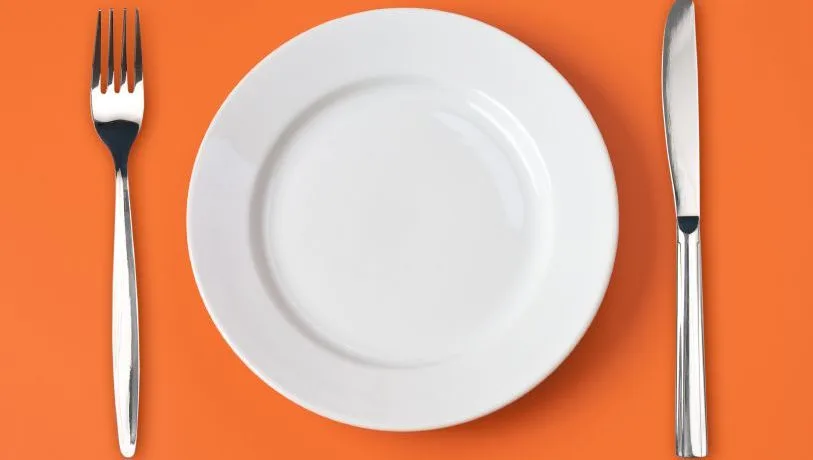Touted as an efficient, sustainable way to lose weight, intermittent fasting is garnering a cult-like following. But is it just another fad diet? Or are the weight loss claims legit? Let’s explore the real science (and art) behind fasting to harness its transformative potential the right way.
Intermittent fasting cycles between periods of fasting and eating. It allows your body to briefly rest from digestion to tap into energy reserves. People rave about intermittent fasting for effortless, long-term weight loss. But it requires balance and self-awareness.
Here’s the key – combine time-restricted fasting with nutritious, mindful eating during your feasting windows. Address lifestyle factors like activity, sleep and stress management too. With this integrative approach, intermittent fasting becomes a flexible, empowering tool for weight loss rather than a rigid diet.

Understanding Intermittent Fasting
Intermittent fasting simply means alternating intervals of fasting and normal eating. Here are some popular styles:
- 16:8 fasting involves a 16 hour fast followed by an 8 hour eating window. For example, 12pm to 8pm.
- 5:2 fasting alternates 5 regular eating days with 2 fasting days per week.
- 24 hour fasts are done 1-2 times per week on non-consecutive days.
- Alternate day fasting switches between fasting days and feasting days.
Fasting duration is flexible, from 12 hours overnight up to 24-48 hours depending on the protocol. Water, tea and black coffee are often permitted during fasts. For most healthy adults intermittent fasting is generally safe when eased into slowly. However, longer fasts can put you at risk for dehydration, nutritional deficiencies and blood sugar crashes. Those with certain medical conditions and women who are pregnant/nursing require extra precaution and medical guidance.

How Intermittent Fasting Promotes Weight Loss
What’s actually happening in your body during fasting periods that leads to weight loss? A few key metabolic mechanisms kick in:
- Lower insulin levels – Insulin drops when you fast leading to increased fat burning, especially from stubborn belly fat stores. This metabolic state called ketosis promotes weight loss.
- Growth hormone – Levels of human growth hormone skyrocket while fasting. This powerful hormone enables your body to burn fat aggressively while retaining lean muscle mass.
- Improved insulin sensitivity – Fasting has been shown to improve how efficiently your cells absorb sugar from carbohydrates thanks to heightened insulin sensitivity. Better blood sugar regulation supports weight loss.
Multiple studies confirm alternate day fasting and time-restricted feeding substantially decrease body weight, body fat, waist circumference and visceral fat over 8-52 week study periods compared to normal eating habits. Researchers conclude fasting regimes benefit weight loss and metabolic regulation through these key biological mechanisms.
Getting Started with Intermittent Fasting
Patience and lifestyle prep sets the stage for intermittent fasting success. Start by extending your overnight fast and delaying breakfast slightly. Once adapted over a week or two, gradually stretch the daily fasting window. The 16:8 method (like 12pm-8pm eating window) is often best for beginners.
Stock up on plenty of fresh produce, lean proteins and whole grains so you properly nourish during feeding times. Meal prepping can take the guesswork out of having balancedmacro meals ready-to-go. Address any mineral and electrolyte deficiencies before starting since fasting can deplete these nutrients. Establishing healthy routines of activity, sleep and stress management also empowers your intermittent fasting journey.
Discuss starting an intermittent fasting plan with your doctor, especially if you have any medical conditions or take prescription medications. They can help determine risks and benefits given your health history. Don’t attempt fasting if you have active cancer, liver disease, malnutrition, underweight issues or an eating disorder.

Mastering the Intermittent Fasting Lifestyle
Though the science highlights formidable weight loss effects, you’ve got to finesse the art of intermittent fasting through these key strategies:
- Stay ultra hydrated with water, herbal tea and black coffee during fasts to curb hunger. Take mineral supplements if needed.
- Learn how to read your body’s signals. Feeling lightheaded, cranky or ravenous likely means it’s time to break your fast.
- Avoid feeling overly hungry or deprived during fasts which can trigger rebound bingeing when you do eat. Find a comfortable routine.
- Make mindful food choices during eating periods. Focus on balanced, whole food nutrition. Avoid calorie counting.
- Get plenty of restorative sleep, de-stressing activities, and movement during fasting and non-fasting periods. Overall lifestyle matters!
Be flexible. Tweak your intermittent fasting routine until you dial in an approach that works sustainably. Patience through periods of adjustment is key too. The lifestyle and mindset changes take time and consistency. But the rewards will be well worth it!
The Exciting Physiology Behind Intermittent Fasting Weight Loss
Now let’s geek out on the amazing changes happening inside your body during fasting periods:
- Switching metabolic modes – Fasting triggers ketosis, a fat burning state where the liver breaks down fatty acids for energy when glucose is scarce. This metabolic switch torches body fat, especially around the belly.
- Growth hormone response – Levels of human growth hormone may skyrocket up to 300% higher during fasted states. This powerful hormone tells the body to incinerate fat stores while maintaining precious calorie-burning lean muscle tissue. More muscle means a revved metabolism too!
- Improved insulin sensitivity – Studied show intermittent fasting enhances how efficiently your cells absorb sugar from carbohydrates thanks to improved insulin sensitivity and lowered insulin resistance. Better blood sugar regulation and metabolic function means fasting both drops pounds and reduces obesity risk long-term.
- Longevity pathways – Fasting triggers adaptive cellular stress responses similar to exercise. This activates genes and pathways involved in cell repair, hormone regulation and protection against disease. The anti-aging effects and disease prevention benefits are quite remarkable.
The published research clearly demonstrates intermittent fasting’s potent effects on weight loss, body composition and metabolic health. Yet another reason to tap into the power of fasting!
Intermittent Fasting Benefits Beyond Weight Loss
Emerging research reveals fasting provides other awesome benefits beyond just slimming your waistline:
- Heart health – Studies show intermittent fasting improves numerous heart health markers including blood pressure, resting heart rate, cholesterol levels, inflammatory markers, triglycerides and insulin resistance.
- Brain function – Intermittent fasting may enhance cognition and clarity while reducing risk of neurodegenerative diseases like Alzheimer’s and Parkinson’s disease. Markers of brain aging also improve.
- Blood sugar regulation – Fasting powerfully lowers insulin resistance which reduces risk for obesity, diabetes and other metabolic disorders. Blood sugars stabilize.
- Cancer prevention – Animal and human studies reveal fasting starves cancer cells while protecting healthy cells. It limits cell mutations and growth while enhancing immune defenses.
- Longevity – Studies link intermittent fasting with longer lifespan thanks to better weight control, reduced inflammation, improved cardiovascular health, and protective cellular mechanisms.
While research continues to unfold, the evidence clearly demonstrates intermittent fasting benefits well beyond just slimming your waistline. Though not a quick fix, incorporating fasting as a long-term lifestyle empowers weight loss and overall health.
Troubleshooting Common Intermittent Fasting Challenges
Change is hard. Starting an intermittent fasting routine will likely bring some bumps in the road. But have patience and stay motivated through these potential hurdles.
Mindset – It’s normal to struggle with the mental shift from eating frequently to prolonged fasting periods. Stay focused on your goals and don’t obsess over food. Drink water and stay busy.
Hunger pangs – Physical hunger during fasts is common especially when first starting out. Be prepared with mineral supplements and appetite-suppressing teas. Don’t let yourself get too ravenous.
Cravings – Fasting causes ghrelin levels to spike which can intensify cravings. Stay hydrated, plan satisfying meals, and remember cravings will pass. Don’t give in and overindulge.
Headaches – Dehydration and/or low blood sugar can trigger headaches. Ensure you properly refeed after fasts. Drink electrolytes and eat regular balanced meals.
Constipation – Limit this common side effect by staying very hydrated and eating plenty of fiber during eating windows. Move your body too.
Exercise – Timing exercise strategically helps avoid low blood sugar. Shorter duration gentle workouts are best done fasting whereas high intensity exercise is better post-meal. Listen to your body.
Socializing – Explain your eating plan politely to friends and family. Adjust your eating window to accommodate social engagements or suggest alternative activites.
Motivation – Plateaus and fluctuating progress can be discouraging. Celebrate milestones, find accountability buddies, and reflect on your “why” regularly to power through.
Be patient and compassionate with yourself through the adjustment period. Experiment to find strategies that work for your lifestyle and body. The initial growing pains do pay off so stick with intermittent fasting and make it work for YOU.

Intermittent Fasting the Smart, Sustainable Way
While intermittent fasting does require commitment and patience, the weight loss and health gains speak for themselves. By combining time-restricted eating with nutritious food choices and other healthy lifestyle habits, you truly unlock the benefits.
Remember, this is a lifestyle approach not a quick fix. Consistency, balance and self-care will serve you well on your fasting journey. Avoid obsessively tracking hours and calories. Instead tune into your body’s innate signals. Be flexible and make changes slowly.
Intermittent fasting provides a powerful tool to transform your health when embraced in a gentle, sensible way. But it also requires body awareness and attention to your overall well-being. With an open mind and kind heart, fasting can unlock your health’s highest potential.
Continuing Your Intermittent Fasting Education
Hopefully this beginner’s guide has pumped you up to try intermittent fasting for empowering weight loss and better health. For tons more fasting tips, recipes, and lifestyle advice be sure to subscribe to receive our weekly email newsletter. We always deliver fresh intermittent fasting content and motivation right to your inbox. Here’s to a healthier, happier you! Get ready to thrive with the incredible power of intermittent fasting.
Thank you for reading this post, don't forget to subscribe to our free newsletter
!